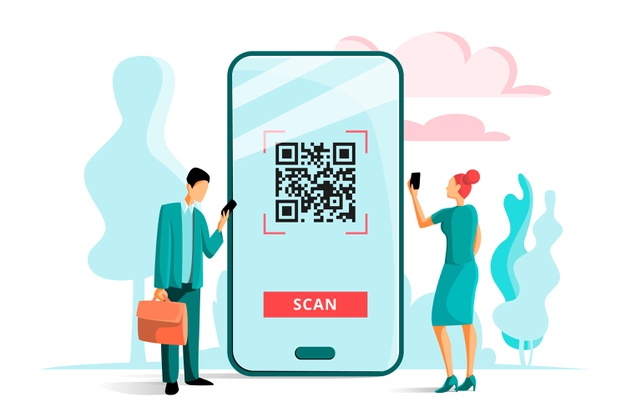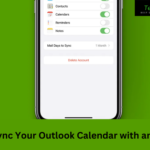In the past, login experiences were often riddled with security concerns. Weak passwords and phishing emails made it easy for hackers to access sensitive customer information.
According to a Verizon study, organizations face 83% of security breach threats from external sources like organized crime groups, and 74% of breaches include human elements like errors, privilege misuse, stolen credentials, or social engineering.
How do you protect credentials, and how do you safeguard your organization, your employees, and your customers from financial losses?
A great way to address this issue is with QR Codes.
QR Codes are powerful solutions for enhancing customer security experience. They streamline smart logins and strengthen authentication with two-factor verification.
In this article, we will discuss how to harness the power of QR Codes to enhance your customer security experience. We will also discuss the contribution of a QR Code generator to achieving this.
Customer security challenges faced by brands in the pre-QR Code era
Before QR Codes became ubiquitous, brands struggled with several security challenges that left them and their customers vulnerable to data breaches, identity thefts, and frauds. In the pre-QR Code era, some of the prominent issues that plagued businesses and customer experience were:
Only password-based authentication: Traditionally, security relied on passwords alone for authentication, which were prone to phishing attacks, theft, and forced hacking. Customers often struggle to create complex passwords and remember them. This usually leads them to set weak passwords and use the same password across platforms, increasing the risk further.
Identity theft: With people adopting technology faster than ever, their information started to find a place online. It became easy to find information on people on the internet. Identity theft has exponentially increased with personal information scattered across platforms and databases. Exploiting the vulnerabilities in the outdated protocols, cybercriminals quickly gained unauthorized access to sensitive user data like credit card details, medical records, and social security numbers, causing severe financial loss and mental stress.
Data breaches: In 2013, 3 billion Yahoo accounts were hacked, and attackers accessed account information and stole payment card and bank data, security questions and answers, and plaintext passwords. Data breaches cause severe damage to a company’s reputation, causing financial losses and triggering regulatory compliance. Harnessing the weakness in network infrastructure and software systems, hackers cause irreparable damage to the brand. The 2013 data breach caused Yahoo to land a priced acquisition deal with Verizon.
Counterfeiting and frauds: Consumers often fall victim to counterfeit products without authentication. Fake websites and phishing scams exploit unsuspecting users who fall victim to counterfeit products, leading to poor brand image, financial losses, and disappointment.
Lack of secure communication channels: Brands and customers communicate on insecure channels, leaving their confidential information vulnerable. SMS, emails, and phone calls were susceptible to malicious activities, leading customers to fall victim to phishing frauds.
Advantages of QR Code in improving customer security
QR Codes are an excellent mode of marketing, and when you combine them it security features, they become cardinal to businesses with the following advantages:
Two-factor authentication
QR Codes offer easy implementation of two-factor authentication, which means that in addition to entering their password, customers verify their identity, adding an extra layer of security. This helps mitigate risks of unauthorized access even if the password is compromised, which reduces the risk of account fraud or hacking.
Phishing annihilation
Phishing frauds caused a $4.9 million loss in 2023. By tricking users into clicking malicious links, fraudsters steal their login details. QR Codes reduce this risk by enabling businesses to display secure QR Codes on trusted platforms and apps to provide a direct link to the login page.
Fraud prevention
QR Codes offer a convenient way to streamline processes and access information. For example, you display the QR Code of the payment gateway to your payment page, confirming payment information and transaction amount. This creates a transparent, secure, and authentic payment channel without your customers losing their sensitive data.
Components of QR Code Security
Integrating these components is very important to ensure safe QR code-based interactions.
Encryption: Advanced encryption algorithms are used to encrypt the data embedded within QR Codes to ensure the safety of sensitive information like payment credentials, personal identification details, etc.
Secure Code Management: This ensures the authenticity, integrity, and confidentiality of QR Codes throughout their lifecycle. It includes:
- Secure code generation using only trusted platforms that offer robust encryption algorithms, GDPR & SOC® 2 Type 2 compliance, multi-factor authentication, phishing detection, anomalous scan detection, and other features like Uniqode
- Access controls to restrict who can generate, modify, or distribute QR Codes. For example, Role-based Access offered by Uniqode allows assigning different levels of access to other users in your organization
- Auditing and monitoring of QR Codes for detecting and responding to security incidents promptly like the Anomalous Scan Detection, phishing detection, security status of the system offered by Uniqode QR Code generator
Authentication Mechanisms: Implement mechanisms to verify the legitimacy of the QR Code and the entity it represents, such as cryptographic hashes and digital signatures. It may also ask for user authentication through biometric scans, PINs, and OTPs to access the coded information.
Dynamic QR Codes: Dynamic QR Codes contain time-sensitive information or one-time use attributes, enhancing security and preventing unauthorized access. The dynamic QR Code contains unique parameters that expire after a predefined duration or usage limit. This also includes tracking QR Code usage, interaction monitoring, content modification, and access revocation to reduce the risk of misuse.
Applications of QR Codes in Customer Security
QR Codes are versatile tools and offer a surprisingly secure customer experience across various touchpoints. Some QR Codes applications for securely enhancing customer experience are:
Secure payments
QR Codes are excellent for contactless payments and offer a secure mode of transaction. Customers simply scan the digital dynamic QR Code at the kiosk installed at the counter and process the payment using their payment apps like GooglePay.
Just as PayPal uses QR Codes to facilitate secure transfers for retail stores, the PayPal app creates a unique QR Code for merchants to scan and process the payment. This eliminates the risk of skimming devices stealing card information and creates a safe payment method.
Promotional offers
Retailers leverage QR Codes to deploy their marketing and promotional activities securely. By using QR Codes in their marketing materials like digital advertisements, posters, and flyers, advertisers allow customers to redeem exclusive coupons and discounts. Additionally, QR Codes for special incentives be printed on in-house products like Coffee mugs, tissues, and campaigns to unlock discounts.
Starbucks is an excellent example of enhancing user experience securely using QR Codes.
Ticketing
QR Codes revolutionize the ticketing industry by providing a safe solution for issuing and validating tickets. Enabling organizers to generate a unique and downloadable QR Code for each ticket creates a secure layer in the ticketing system. The generated QR Code is scanned at the event, authenticating the ticket and preventing unauthorized access.
Similarly, using QR Codes to generate tickets in public transport enables commuters to purchase e-tickets themselves. Inspectors scan the tickets to validate their authenticity and determine the fair charge of the distance. This also verifies the passenger’s identity traveling.
Airlines are frequent users of QR Codes to authenticate passengers.
Conclusion
In 2023, QR Code generation saw a staggering rise of 238.06% in business across industries. The widespread adoption of QR Codes shows their impact on enhancing customer convenience. When you combine this with a highly secure QR Code generator, you get security features like:
- Role-based access
- SSO login
- GDPR & SOC® 2 Type 2 Compliance
- Custom domain
- Age gating
- One or more annual third-party audit(s)
- Annual third-party penetration testing
- Access to sub-processors list
- Centralized IAM solution
- Phishing detection for safer QR Codes
- Anomalous Scan Detection
Try QR Codes now to create an unparalleled security experience for your customers.








